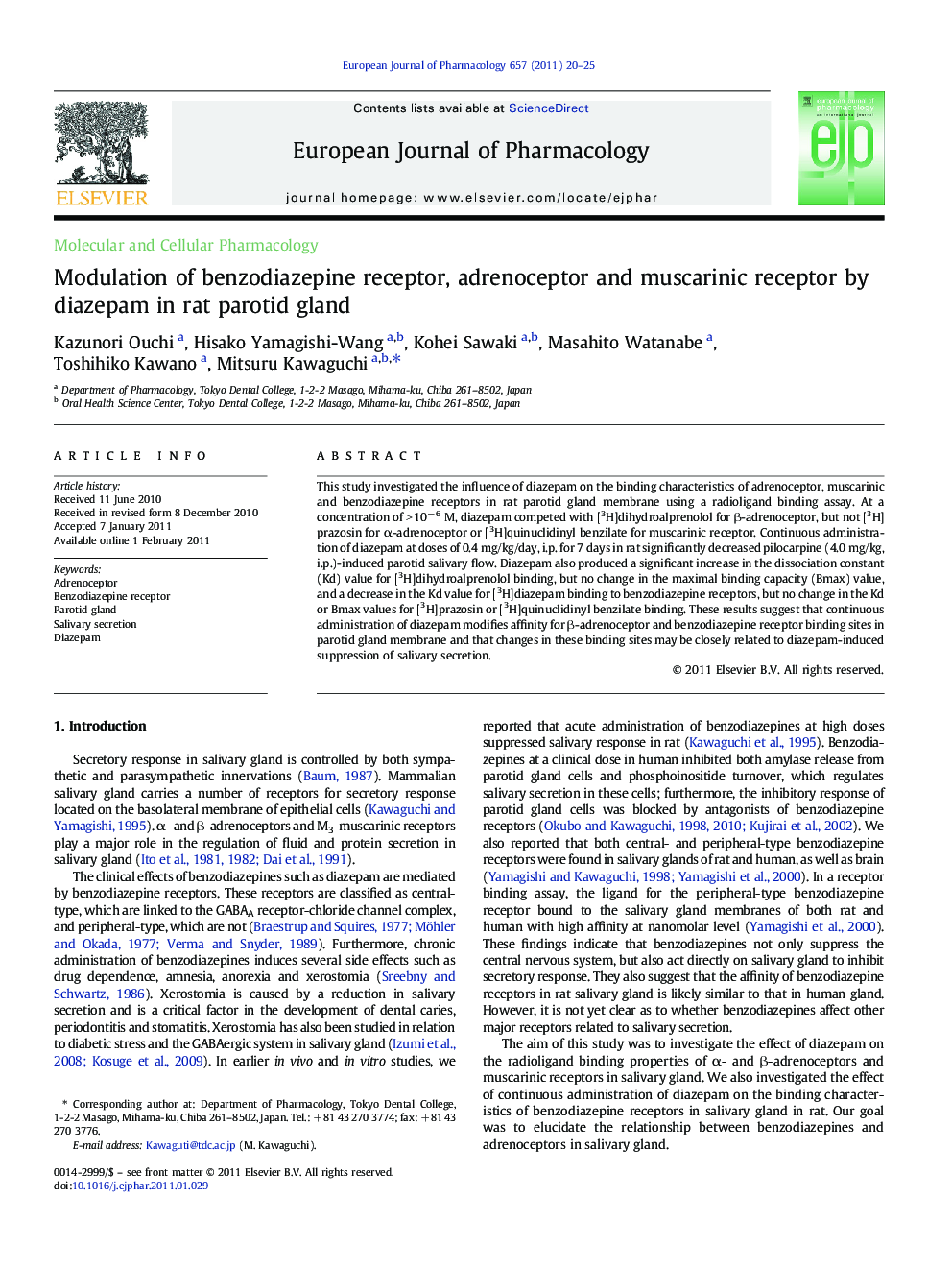| Article ID | Journal | Published Year | Pages | File Type |
|---|---|---|---|---|
| 2532877 | European Journal of Pharmacology | 2011 | 6 Pages |
Abstract
This study investigated the influence of diazepam on the binding characteristics of adrenoceptor, muscarinic and benzodiazepine receptors in rat parotid gland membrane using a radioligand binding assay. At a concentration of > 10â 6 M, diazepam competed with [3H]dihydroalprenolol for β-adrenoceptor, but not [3H]prazosin for α-adrenoceptor or [3H]quinuclidinyl benzilate for muscarinic receptor. Continuous administration of diazepam at doses of 0.4 mg/kg/day, i.p. for 7 days in rat significantly decreased pilocarpine (4.0 mg/kg, i.p.)-induced parotid salivary flow. Diazepam also produced a significant increase in the dissociation constant (Kd) value for [3H]dihydroalprenolol binding, but no change in the maximal binding capacity (Bmax) value, and a decrease in the Kd value for [3H]diazepam binding to benzodiazepine receptors, but no change in the Kd or Bmax values for [3H]prazosin or [3H]quinuclidinyl benzilate binding. These results suggest that continuous administration of diazepam modifies affinity for β-adrenoceptor and benzodiazepine receptor binding sites in parotid gland membrane and that changes in these binding sites may be closely related to diazepam-induced suppression of salivary secretion.
Related Topics
Life Sciences
Neuroscience
Cellular and Molecular Neuroscience
Authors
Kazunori Ouchi, Hisako Yamagishi-Wang, Kohei Sawaki, Masahito Watanabe, Toshihiko Kawano, Mitsuru Kawaguchi,
